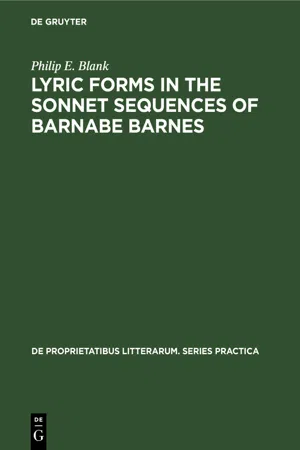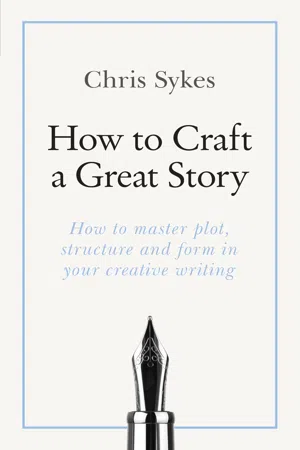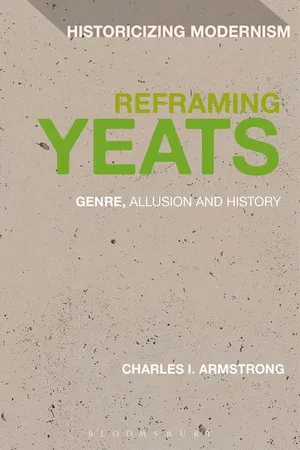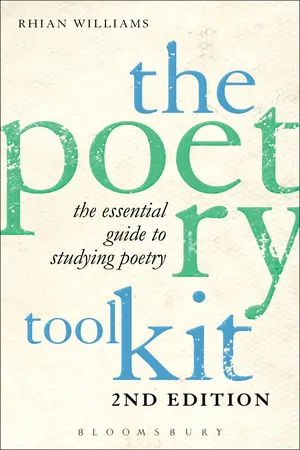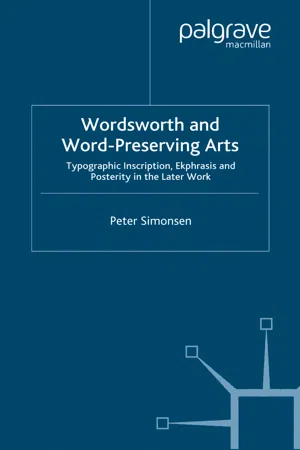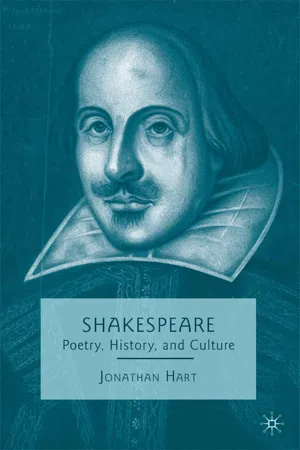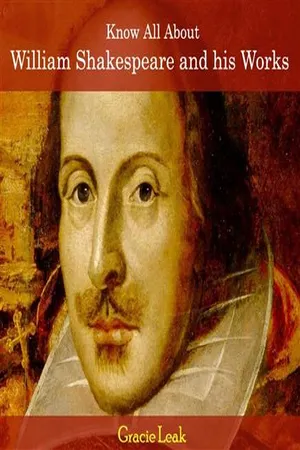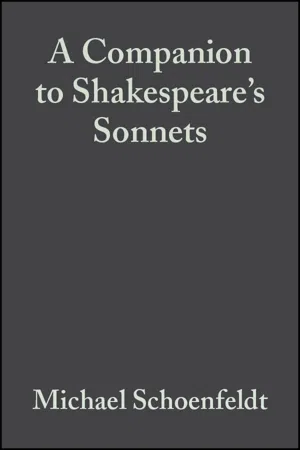Literature
Sonnet
A sonnet is a 14-line poem that follows a specific rhyme scheme and meter. It is traditionally written in iambic pentameter and often explores themes of love, beauty, and mortality. The two most common types of sonnets are the Italian or Petrarchan sonnet and the English or Shakespearean sonnet, each with its own distinct structure and rhyme scheme.
Written by Perlego with AI-assistance
Related key terms
1 of 5
10 Key excerpts on "Sonnet"
- eBook - PDF
- Nigel McLoughlin(Author)
- 2017(Publication Date)
- Red Globe Press(Publisher)
PART I: FORM & STRUCTURE 2 1 Varieties of the Sonnet Nigel McLoughlin What is a Sonnet? Traditionally, the Sonnet is thought of as a poem of 14 lines which exists in two main variant forms: the Petrarchan Sonnet and the Shakespearean Sonnet. These two main forms take their names from Francesco Petrarca and William Shakespeare, but the Sonnet evolved gradually. It is thought to have originated in Provence although the location is disputed. Originally, the Italian word sonetto meant ‘a little song’ or ‘short refrain’ and was recited to musical accompaniment, and it became fashion-able in English poetry after it was imported from Italy around the start of the 1500s. In the sixteenth century, Sir Thomas Wyatt and Henry Howard, Earl of Surrey, brought the Sonnet form to England mainly through translations of Continental poets. Howard modified the form and began a process of evolution. He used a variant that became the Shakespearean Sonnet. Later, Sir Philip Sidney used Petrarch as a model, but with some varia-tion, when he composed his Sonnet sequence Astrophel and Stella . These various early acts of translation, modification and modelling offered flexibility and hybrid vigour, and resulted in a strong tradition of Sonnets in English. The form has continued to evolve, and different parts of its struc-ture became more or less important. As it developed, there emerged unrhymed Sonnets; tailed Sonnets (15–20 lines); such as those by Milton, and curtal (or curtailed) Sonnets (10–13 lines); perhaps most famously by Gerard Manley Hopkins. The various Sonnet types have been put to good use by every major movement within poetry, from Donne and other metaphysical poets through to the eras of the Romantics and the Victorians. - Philip E. Blank(Author)
- 2020(Publication Date)
- De Gruyter Mouton(Publisher)
LOVE SonnetS 71 to some critics, the Sonnet embraces the range of forms in which it has been composed, while to others it more properly includes only the reg-ular forms, in which the elements and their interconnections are pre-scribed. Norman Friedman and Charles A. McLaughlin exemplify the first view: It used to be thought that there were certain 'rules' prescrib-ing how Sonnets should be written, but here as elsewhere poets have a way of doing what they want and so many variations are possible as to discredit the idea of absolute standards. 4 Felix E. Schelling speaks in the same vein about the Elizabethan Sonnet: The term, Sonnet, is very elastic as employed by Elizabethan writers; and it was commonly used, as originally in Italy, to signify a short lyric of almost any form...; the forms of the Elizabethan quatorzain, to say nothing of derivative stanzas of other lengths, are almost endless. 5 Critics holding the second view apply their opinion with varying degrees of rigorousness. Theodore Watts-Dunton merely observes that the prescriptive formula itself is intrinsic to the genre: . . . The peculiar pleasure which the ear derives from the Sonnet as a metrical form lies in the number and arrangement of the verses being prescribed, and distinctly recognizable as being pre-scribed. 6 Charles Tomlinson's description of the Italian form more clearly sounds the note of compulsion: The object of the regular or legitimate Italian Sonnet is to express one, and only one idea, mood, sentiment, or proposition, and this must be introduced in appropriate language in the first quatrain.... 7 T. W. H. Crosland expresses the view most strongly: It has been commonly held that poetry is a law unto itself, and that there are no standards whereby it can be judged. Of the Sonnet, however, this is certainly not true. The law has written itself explicitly and finally, and the standards have been set up and are irremovable.- eBook - ePub
How to Craft a Great Story
Teach Yourself Creating Perfect Plot and Structure
- Chris Sykes(Author)
- 2019(Publication Date)
- Teach Yourself(Publisher)
All right, this is poetry. Sestinas and Sonnets are old fashioned and not everybody wants to write poetry anyway. What relevance does all this have for story writing today? Is there a set of rules or a correct set of proportions for a story? Today, the answer to the question must be no and, yet, yes. In general there is as wide a variation in our understanding or agreement of what a short story is as to what makes a poem. As the world has changed so many of the traditionally accepted forms have collapsed.The world is changing fast and writing is changing with it. Almost no one today is certain what a poem is. Whereas a poem once might have been said to require a regular rhythm, an established and accepted form or to rhyme, now, none of those requirements are deemed necessary. And if someone dared to offer today a definition of what was required for a piece of writing to be a poem, another person, equally erudite, would pop up with an alternative.Consider what has happened to the Sonnet. Traditionally each of the English or Shakespearean, the Petrarchan, the Spenserian has slight variations of structure but the basic form remains intact; a 14-line poem which rhymes in a way particular to that version. There is also a structure of argument being set up in one section and resolved in another. But we now live in a world where poets write Sonnets that are any number of lines, as few as ten or twelve lines and without any rhyme at all. One wants to ask, what makes one poem a Sonnet as opposed to any other free verse poem? In our time a poem can be called a Sonnet because the poet has labelled it so, in much the same way that a piece of art is a piece of art because the artist names it. And what one person calls a free verse poem with no rhyme or discernible rhythm, someone else calls ‘chopped up prose’. It is the same with a story or a novel. They come in all shapes and sizes. - eBook - PDF
- Peter Hyland(Author)
- 2017(Publication Date)
- Red Globe Press(Publisher)
The form appears to have originated in southern Italy a century or so before Petrarch wrote, but he made it so fashionable that it was exported to Spain in the fifteenth century, to France and England in the sixteenth, and to Germany in the seventeenth. 1 The Italian Sonnet was a fourteen-line poem with eleven syllables to a line, and as Petrarch developed it, it fell into two parts, an eight-line section (now called an ‘octave’) with the rhyme-scheme abbaabba , and a six-line section (the ‘sestet’) cdecde , though there were variants of this ( cdcdcd , cdedce , cdeced ). Whatever the variant within the sestet, Italian Sonnets avoided ending with a couplet. I shall return to a considera-tion of the implications of these rhyme-schemes later. A Sonnet that exhibits clearly many of the devices developed by Petrarch is number 132 of the Canzoniere : S’amor non è, che dunque è quel ch’io sento? a ma s’egli è amor, per Dio, che cosa e quale? b se bona, ond’è l’effetto aspro e mortale? b se ria, ond’è sì dolce ogni tormento? a S’a mia voglia ardo, ond’è ‘l pianto e lamento? a s’a mal miogrado, il lamentar che vale? b O viva morte, o dilettoso male, b Shakespeare and the Elizabethan Sonnet 127 come puoi tanto in me, s’io no ‘l consento? a E s’io ‘l consento, a gran torto mi doglio. c Fra sì contrari vènti in frale barca d mi trovo in alto mar, senza governo, e sì lieve di saver, d’error sì carca, d ch’i’ medesmo non so quel ch’io mi voglio, c e tremo a mezza state, ardendo il verno. e A modern translation of this Sonnet (without attempting a replication of the rhyme-scheme) renders it as follows: If it’s not love, then what is it I feel? But if it’s love, by God, what is this thing? If good, why then the bitter mortal sting? If bad, then why is every torment sweet? If I burn willingly, why weep and grieve? And if against my will, what good lamenting? O living death, O pleasurable harm, how can you rule me if I not consent? And if I do consent, it’s wrong to grieve. - eBook - PDF
Reframing Yeats
Genre, Allusion and History
- Charles I. Armstrong(Author)
- 2013(Publication Date)
- Bloomsbury Academic(Publisher)
Shakespeare, Sonnets and Sonnetic Monstrosities 125 With regard to Shakespeare’s Sonnets, the evident structure of thinking is manifest in the poems’ formal architecture. For Vendler, these Sonnets exist in basic opposition to the precedent of the earlier Italian, or Petrarchan, Sonnet. Whereas the Italian form is dual, through its linking octave and sestet together via a transitional volta , the Shakespearean equivalent is more manifold and unpredictable. Take for instance Sonnet number 8, ‘Music to hear, why hear’st thou music sadly?’ Interpreting this poem, Vendler defends the poet’s many variations of a conceit whereby the addressee’s reluctance to fall in love is compared to the concord and discord of music. She utilizes a diagram in order to make an inventory of ‘Shakespeare’s strategies for unifying Sonnet-parts into a true concord . . . by unions married .’ 10 Underlying this organized plurality is what she calls an ‘aesthetic principle’: ‘the resolution of many part in one unison’, in the vehicle of the musical metaphor, ‘is of obvious relevance as an aesthetic principle for the Shakespearean Sonnet, which, because of its four discrete parts, runs an inherently greater risk of disunity than does the Italian Sonnet.’ 11 For readers familiar with the basic architecture and history of the Sonnet, Vendler’s distinction between Shakespeare’s aesthetic principle and that of the Italian Sonnet may come as something of a surprise: conventional wisdom allows for both of these forms to be seen as either divisible by two or four. Traditionally, the English form has been seen as limited by the temptation to use the closing couplet as a vehicle for aphoristic sententiae , a kind of closure that invites our conceiving of the whole poem as primarily an argumentative vehicle – something which is at odds with the open-ended structures of meaning cultivated in modern poetry. - eBook - PDF
- Rhian Williams(Author)
- 2013(Publication Date)
- Bloomsbury Academic(Publisher)
It is particularly prevalent in the ballad tradition, and in the fixed French forms such as the villanelle and the ballade , but they also feature in lyric poems Stanza A group of poetic lines, defined by its arrangement of metre and rhyme . Feet, lines and rhymes of poetry have been considered; now we come to how all of these features come together into particular poetic arrangements. ‘Stanza’ is the name given to blocks of formal poetry; commonly these blocks are called ‘verses’ (especially with reference to songs), but stanza is clearer. (Note however that in blank verse such divisions are known as verse paragraphs .) ‘Stanza’ is often etymologically linked via Latin to the Italian for ‘stopping place’, but the term also applies in Italy to a chamber or room and this latter root is more helpful in thinking about the definition of a stanza of poetry. We may think that a room is most obviously defined by its function and content (beds in bedrooms; ovens in kitchens). Framing this functional definition, however, is a room’s dimensions (the length of its walls) and its decor. A stanza’s line lengths may be likened to its ‘walls’ (which form a particular set of dimensions on the page) and the rhyme scheme , which decorates the line lengths, becomes the wallpaper. In this section stanzas are arranged primarily in terms of their dimensions – the number of lines included in each – since all stanzas may be described most simply in this way. In certain fixed or named stanza arrangements the rhyme scheme or metre is specified, so these are also given in each definition. 5.1 One-line stanzas and refrains Stanza 183 as a case of heightened or concentrated emotion. A famous example is Alfred Tennyson’s ‘Lady of Shalott’ (1832), in which the subject’s name is repeated as a refrain in the final line of every stanza . - eBook - PDF
Wordsworth and Word-Preserving Arts
Typographic Inscription, Ekphrasis and Posterity in the Later Work
- P. Simonsen(Author)
- 2015(Publication Date)
- Palgrave Macmillan(Publisher)
This placement underscores that Wordsworth thought of the Sonnet as a type of poem whose visual display matters. To the extent that the Sonnet incorporates the surface of inscription as part of its meaning, like the poems with which it is classified, this surface is the page. Wordsworth’s Sonnets may in other words be seen as inscriptions which have been removed from the tradi- tional inscriptional surface of stone and have found their proper ‘room’ in the book fixed on the page by the medium of print. Wordsworth’s and Moxon’s sense of the relation between the Sonnet and the page may also be illuminated by an 1835 review in Blackwood’s Edinburgh Magazine, which elaborated an intriguing analogy between the single-page Sonnet and works of painting: All write Sonnets [and] you will seldom find a volume of poems in which some twenty or thirty, or more, do not each occupy its own page as the author’s especial favourites. If they are, as we believe they are, the author’s favourites, they ought to bear mostly the impress of genius—the concentrated essence of poetry in fourteen lines . We look upon Sonnets, when they are such as Sonnets should be, as cabinet pictures, each one complete in itself . [T]he Sonnet is one The Sonnet as Visual Poetry 109 highly finished picture, richly framed, admitting, strictly speaking, but one prominent idea, one subject, every line tending to the point, as all within the frame would converge to the principal object. They are cabinet pictures, all of a size—the frames bespoken fourteen inches in the clear. 14 When considering this review alongside the fact that most of Wordsworth’s ekphrastic poems are Sonnets, it should be more evident that he thought of the Sonnet as a form of visual poetry. - eBook - PDF
Shakespeare
Poetry, History, and Culture
- J. Hart(Author)
- 2009(Publication Date)
- Palgrave Macmillan(Publisher)
The Sonnet itself, a compressed form of musical and semantic time, becomes, in a complex and disjunctive series, a place where the possibility of an enduring art and love—the art of love and the love of art—is called into question. If Shakespeare’s art will fail to endure, then what does that mean for lesser mortals and those characters to whom his narrator promises immortality through the monument of verse? Themes in the Sonnets The Sonnets themselves, whose order may or may not be the one Shakespeare gave to the poems, begins with reproduction as a means to stave off death: “From fairest creatures we desire increase, / That thereby beauty’s rose might never die” (1:1–2). 19 The speaker suggests that the youth avoid wasting himself by being too “niggarding” with his “content” and urges him to make an heir (1:11–12). In Sonnet 2 Shake- speare returns to the theme of the death of the beautiful: this time “forty winters shall besiege thy brow, / And dig deep trenches in thy beauty’s field” (2:1–2). Once more, a child is held up as an answer to age and death, “Proving his beauty by suc- cession thine” (2:12). More amplification of this concern of procreation occurs in Sonnet 3, where the speaker grows ever blunter: “Or who is he so fond will be the tomb / Of his self-love to stop posterity?” (3:7–8). This warning against narcissism is a persistent theme of the procreation or regeneration Sonnets that start Shakespeare’s sequence, and Shakespeare will set up this self-adulatory representation as death itself: “But if thou live rememb’red not to be, / Die single, and thine image dies with thee” (3:13–14). - No longer available |Learn more
- (Author)
- 2014(Publication Date)
- The English Press(Publisher)
Shakespeare also violated many Sonnet rules which had been strictly obeyed by his fellow poets: he plays with gender roles (20), he speaks on human evils that do not have to do with love (66), he comments on political events (124), he makes fun of love (128), he speaks ________________________ WORLD TECHNOLOGIES ________________________ openly about sex (129), he parodies beauty (130), and even introduces witty pornography (151). Legacy Coming as they do at the end of conventional Petrarchan Sonneteering, Shakespeare's Sonnets can also be seen as a prototype, or even the beginning, of a new kind of 'modern' love poetry. During the eighteenth century, their reputation in England was relatively low; as late as 1805, The Critical Review could still credit John Milton with the perfection of the English Sonnet. As part of the renewed interest in Shakespeare's original work that accompanied Romanticism, the Sonnets rose steadily in reputation during the nineteenth century. The outstanding cross-cultural importance and influence of the Sonnets is demonstrated by the large number of translations that have been made of them. To date in the German-speaking countries alone, there have been 70 complete translations since 1784. There is no major written language into which the Sonnets have not been translated, including Latin, Turkish, Japanese, Esperanto, and even Klingon. ________________________ WORLD TECHNOLOGIES ________________________ Shakespeare's influence Macbeth Consulting the Vision of the Armed Head. By Henry Fuseli, 1793–94. Folger Shakespeare Library, Washington. William Shakespeare's influence extends from theatre to literature to present day movies and to the English language itself. Widely regarded as the greatest writer of the English language and the world's pre-eminent dramatist, Shakespeare transformed English theatre by expanding expectations about what could be accomplished through characterization, plot, language and genre. - eBook - PDF
- Michael Schoenfeldt(Author)
- 2008(Publication Date)
- Wiley-Blackwell(Publisher)
Such ebbs and flows of passion typify our experience of the Sonnet sequence as a whole, taking us on an affective journey, following emotions that are dynamic and varied, but with few extended or static moments of fulfillment or joy. In most of the Sonnets, of course, this emotional suffering permeates the poems written in praise of a specific addressee – the mysterious young man or a “dark lady” – albeit in somewhat satiric, even ambiguous terms. In Sonnets 29–30, for instance (to be analyzed later in this essay), the speaker’s feelings for the young man are overcast by despair and complaint: expressed in terms of his “outcast state,” “woes,” “grievances,” and “bootless cries.” The speaker’s expressions of emotional distress often prevent contemporary Anglo-American students from considering Shakespeare’s Sonnets as “love” poems. One of my The “Emotional Regime” of the Sonnets 279 students recently suggested, with some frustration, that Shakespeare’s poems were more about suffering than love. In making this distinction, her response was structured by the normative cultural script of contemporary society, one that promotes instant grati-fication and therapeutic release as integral components of the experience of love. For this student, perhaps not untypically, expressions of loss and grief running through Shakespeare’s Sonnets went against the logic of gratification. Instead, she was asserting a familiar proprietary fulfillment of the consumer society, focused on the question: “What do I get from love?” The student’s unease was further complicated by her response to the Sonnets addressed to the young man (1–126), since they did not speak to standard, heteronormative expectations of a love relationship. Such normative expectations often overlook the Renaissance fluidity of meaning ascribed to the terms “lover” and “friend,” or to the possibilities of men’s desire for and love of other men.
Index pages curate the most relevant extracts from our library of academic textbooks. They’ve been created using an in-house natural language model (NLM), each adding context and meaning to key research topics.

